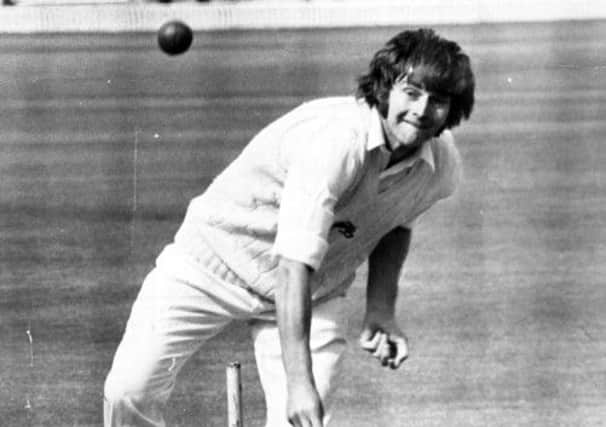Sporting Bygones: Captain Denness supported by cavalier Greig to edge England to Headingley one-day triumph


It will be the third and final incarnation of the 50-over, one-day tournament and all a far cry from the time when one-day cricket burst onto the international scene in the 1970s.
The first ODI was played in January, 1971 between Australia and England at Melbourne Cricket Ground (the same teams featured in the first Test match 94 years earlier).
Advertisement
Hide AdAdvertisement
Hide AdBeginning life as a Test match, officials abandoned the game due to three days of rain and, instead, organised a 40-over ‘one-dayer’.
Australia won by five wickets, with England’s John Edrich becoming the first batsman to score a half-century in the shortened format on an international stage.
It was another four years before the first World Cup was held, teams flocking to England where the West Indies lifted the trophy after beating Australia in a thrilling final at Lord’s.
In between, a total of 18 one-day internationals were staged at various grounds around the world, the first one to be staged at Yorkshire’s Headingley ground arriving on September 5, 1973 when England played host to a West Indies side including eight of the players who would win the World Cup final two years later.
Advertisement
Hide AdAdvertisement
Hide AdWith the format still very much in its infancy and players still adapting their game to a supposed quicker-scoring style, the match was played out in front of a crowd of around 13,500 (of whom ‘7,500 paid £10,500’ according to the following day’s Yorkshire Post match report).
Much like the World Cup final two summers later, it turned out to be a thrilling day’s cricket for those who attended. England were able to restrict a West Indies team captained by Rohan Kanhai and containing Gary Sobers to 181 all out after 54 overs.
Mainly thanks to the recently-recalled Mike Denness, who played a captain’s innings of 66, the home side reached their target with three balls to spare – future England leader Tony Greig chipping in with a lively 48.
Denness had been brought back in from the international wilderness in time to lead England’s 1973-74 tour of the Caribbean where he led them to a very creditable drawn series against a home side just beginning to flex its muscles on the international stage.
Advertisement
Hide AdAdvertisement
Hide AdHe was able to give the West Indies a taste of what they could expect months later by playing a pivotal role in their one-day encounter in Leeds.
According to Terry Brindle’s report in the Yorkshire Post, Denness’s innings “ran like a vein of precious metal through a disappointing claim. Responsibility personified.”
Earlier, the West Indies had looked threatening after winning the toss and deciding to bat with Kanhai, Alvin Kallicharran and future captain Clive Lloyd all ‘getting in’ without going on to get the big score required, Kanhai’s 55 excepted.
Alongside Kent spinner Derek Underwood, Yorkshire’s Chris Old played a huge part in reeling in the West Indies.
Advertisement
Hide AdAdvertisement
Hide AdUnderwood accounted for Kanhai and Kallicharran before Old – who had already dismissed Maurice Foster – captured the vital wickets of Sobers and Bernard Julien in the same over, both caught behind by Derbyshire’s Bob Taylor.
The run rate was more sedate in those early days of one-day cricket and the West Indies’ score of 181 was not considered an easy target, unlike today.
So it proved with Yorkshire’s Geoff Boycott first to go without troubling the scorers, bringing Denness to the wicket alongside opener Mike Smith, the two taking the score to 74 before the latter was lbw to Julien.
Frank Hayes and Keith Fletcher went cheaply but that proved a good thing for England as it brought the cavalier Greig to the crease. Along with the dogged Denness, Greig took the attack to the tourists, hitting 48 off just 54 balls, including four fours.
Advertisement
Hide AdAdvertisement
Hide AdDenness eventually departed when he was bowled around his legs by Lance Gibbs and although Old and Taylor went cheaply, Greig took his team to within touching distance of victory when he tried one aggressive shot too many, skying a catch to a grateful Sobers.
Mike Hendrick quickly followed, leaving a young Bob Willis in the middle with Underwood and the daunting prospect of facing the legendary Sobers with four runs required from the final over.
But, as Brindle reported: “Facing any bowler in those circumstances is a harrowing experience; facing Sobers must be the ultimate in jelly-legged torture, a distillation of horror.
“Willis faced the Monster with ice-cool precision.”
A prod back to the bowler was followed by Willis hitting the second for two before guiding the third ball through gully and the pair scampered home for the match-winning second run.